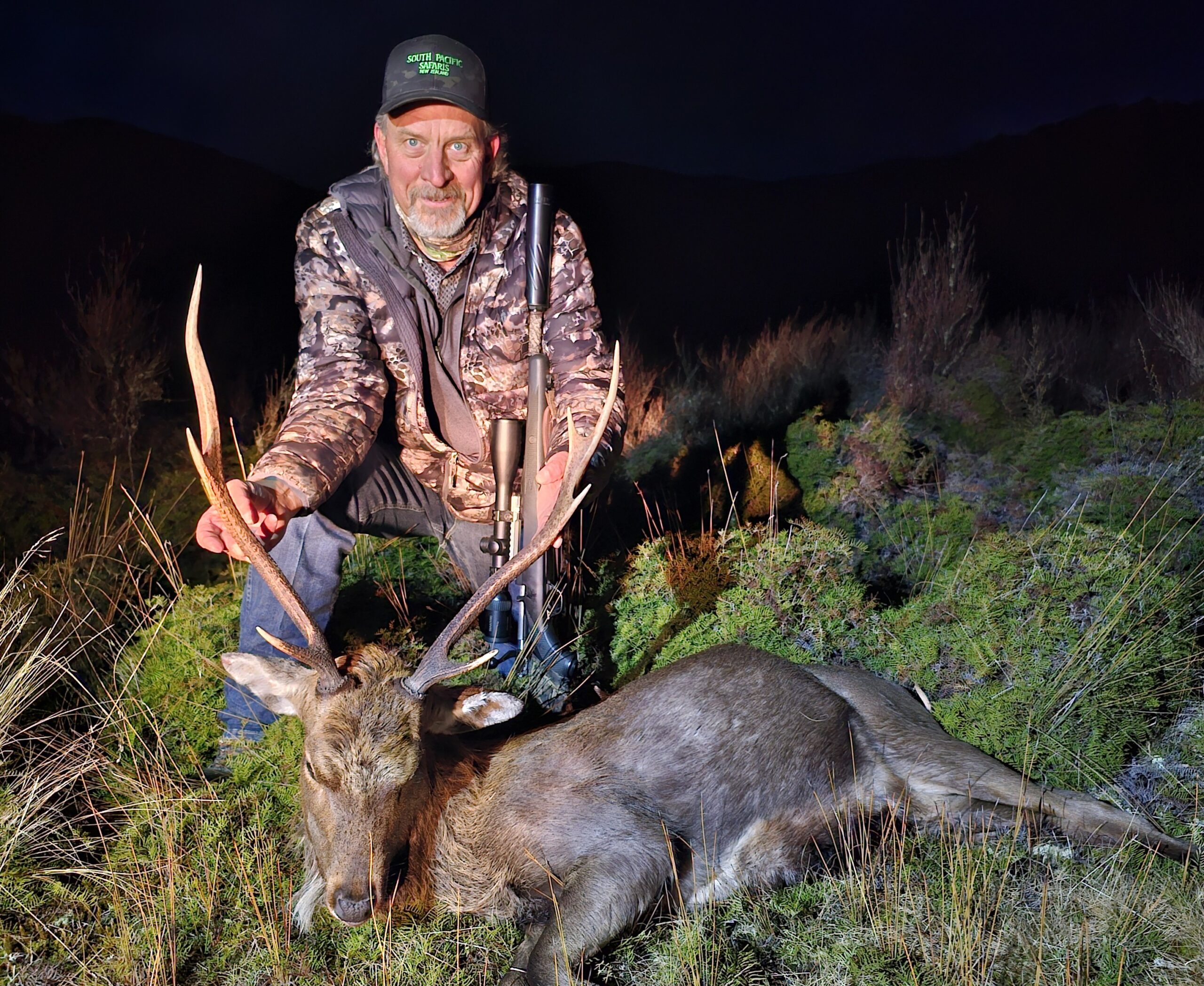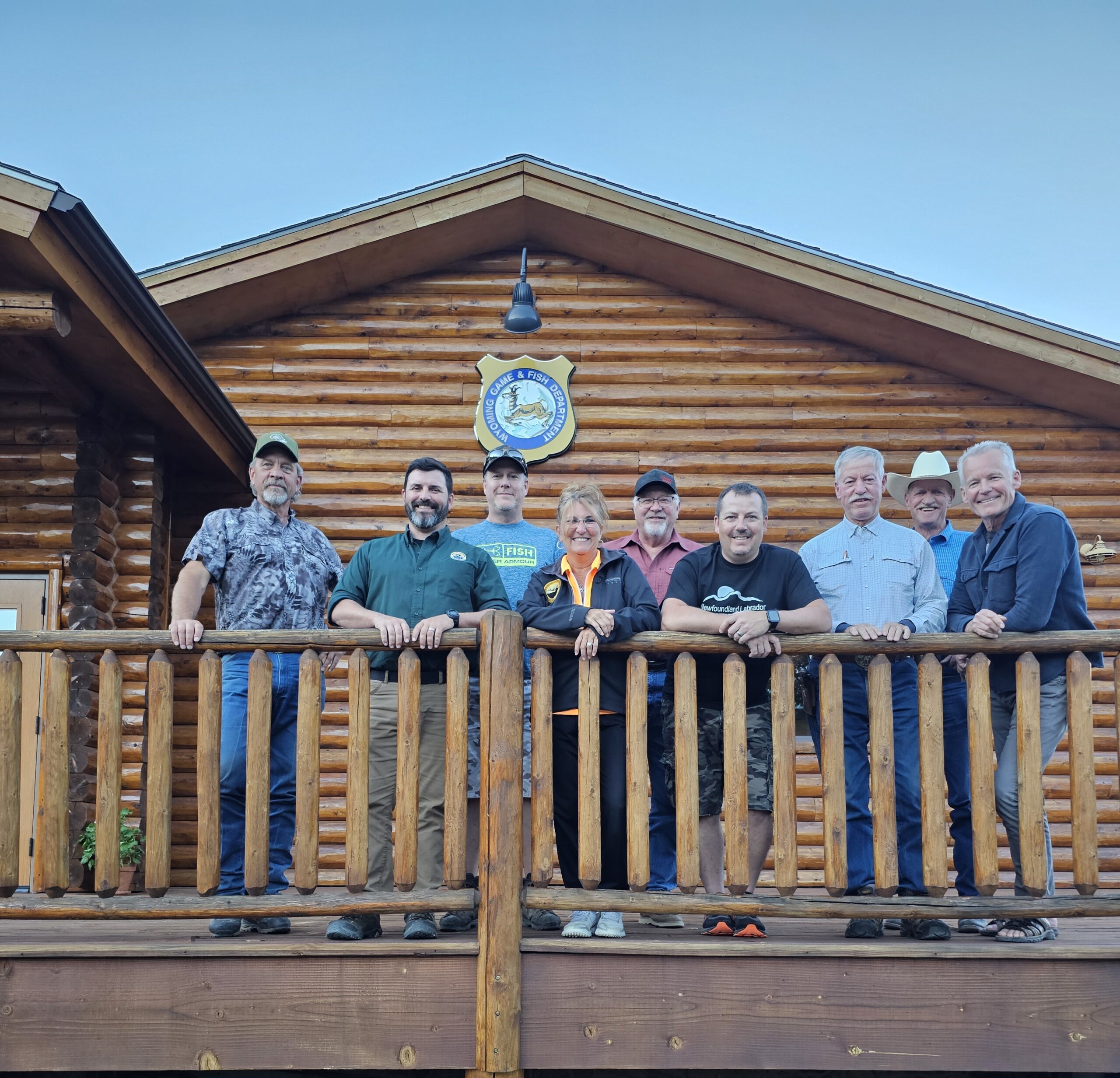Nebraska Game and Parks Commission recently got up-close and personal with 20 bighorn sheep ewes in an effort to track their future offspring. The goal is to get a handle on the species’ population struggles in the Pine Ridge area of northwestern Nebraska.
 With the help of a helicopter wildlife capturing crew and others, Commission staff equipped 20 pregnant female sheep with a device to help immediately detect when lambs are born. The Commission has staged numerous bighorn sheep captures in past years involving the installation of telemetry collars, but this is its first bighorn-monitoring project using this type of transmitter.
With the help of a helicopter wildlife capturing crew and others, Commission staff equipped 20 pregnant female sheep with a device to help immediately detect when lambs are born. The Commission has staged numerous bighorn sheep captures in past years involving the installation of telemetry collars, but this is its first bighorn-monitoring project using this type of transmitter.
The vaginal implant transmitter, often referred to by its acronym VIT, is a three-inch long tube designed to be inserted behind the fetus in the birthing canal. About the same diameter as a roll of dimes, it has an antenna and features two plastic wings to help it stay in place until a lamb is born.
Upon birth, a change in the transmitter’s temperature triggers a frequency that indicates a lamb was born. Shortly after, Commission staff race to the lamb in an attempt to equip it with a temporary VHF collar. By tracking the lambs, biologists hope to get a better idea of what is causing so many of them to die in the Pine Ridge area of Dawes and Sioux counties. Populations have struggled in that region in recent years and biologists believe no lambs survived the 2016 birthing season. Most have died within a couple of months of being born.
Local veterinarians from the Alliance Animal Clinic and Crawford Companion Animal Clinic, staff members of the Henry Doorly Zoo and the U.S. Department of Agriculture Animal and Plant Health Inspection Service, along with students from the Chadron State College’s wildlife management program and other volunteers, joined Commission employees during the processing. The team, consisting of as many as 50 people at times, worked Ponderosa Wildlife Management Area and Fort Robinson State Park near Crawford, private property south of Whitney and U.S. Forest Service property near Chadron State Park.
In addition to the 20 bighorns that were fitted with VITs, the effort netted another six ewes and five rams.
The sheep were captured using a net fired from a gun, then hobbled and carried to the processing station hanging on a tether below the helicopter. Sedatives helped ease stress and intravenous fluids and ice helped lower their high body temperatures. A mobile ultrasound machine helped determine if the ewes were pregnant. Each sheep’s nose and throat were swabbed for bacteria testing and blood samples were taken to determine DNA. The crew also administered antibiotics to help combat any illnesses they might have. Each sheep was also equipped with telemetry collars and ear tags. The collars help Commission wildlife technicians locate each collared sheep at least once a week and the ear tags help with identification.
 “Not only do biologists look forward to learning more from tracking the lambs, they hope to gain insights from test results from this week’s captures,” said Todd Nordeen, Commission big game research and disease program manager.
“Not only do biologists look forward to learning more from tracking the lambs, they hope to gain insights from test results from this week’s captures,” said Todd Nordeen, Commission big game research and disease program manager.
The Pine Ridge herds have disease issues and biologists hope to determine the exact pathogens to blame. Pasteurella pneumonia has been linked to bighorn sheep deaths throughout their ranges in North America, but other bacteria also cause problems.
“We’ll see when we get the test results back how many test positive for mycoplasma ovipneumoniae in particular,” Nordeen said. “That’s another bacteria that sheep have been dealing with throughout the West and research is increasingly showing that it’s one of the primary bacterium leading to die-offs and mortalities.”
Soon, bighorn sheep monitoring efforts will ramp up considerably in the Pine Ridge.
“When spring comes, we’re going to be out there every day tracking these collared ewes, especially when they isolate themselves and look like they’re going to give birth,” he said. “Then we’ll be listening for the frequency of the VIT that is in that particular sheep. We will be prepared with equipment to go in and collar those lambs. Then, we’ll follow them for the next two or three months to identify cause-specific mortality.”
The monitoring will require checks nearly every day and the Commission will be looking to volunteers, such as college students studying to be wildlife managers, to lessen the burden of its staff. Nordeen said it is imperative to find the lambs less than a day after birth and death. Any later than that catching the lambs becomes much more difficult. The longer one waits after death the more chance predators and scavengers will capitalize on their find.
Nebraska now has a population of about 320 bighorns, 140 of which are in the Pine Ridge.
The Audubon’s subspecies of bighorn sheep was native to the butte country of the Nebraska Panhandle but was extirpated from the state because of disease, unregulated hunting and habitat loss in the early 1900s. The subspecies became extinct in 1925.
Rocky Mountain bighorn sheep from Custer State Park in South Dakota were reintroduced to Nebraska in an enclosure at Fort Robinson State Park in 1981. Those sheep were released to the wild in 1988 and 1993 and additional release efforts of sheep from Montana, Canada and Colorado in 2001, 2005, 2007 and 2012 have resulted in herds that reside in areas of the Pine Ridge between Harrison and Chadron and the Wildcat Hills south of Gering and east to McGrew.


